Nov 2009 ODONATES
I came up with some tentative identifications based on web research, and these have now been graciously confirmed by Dennis Paulson (many thanks). |
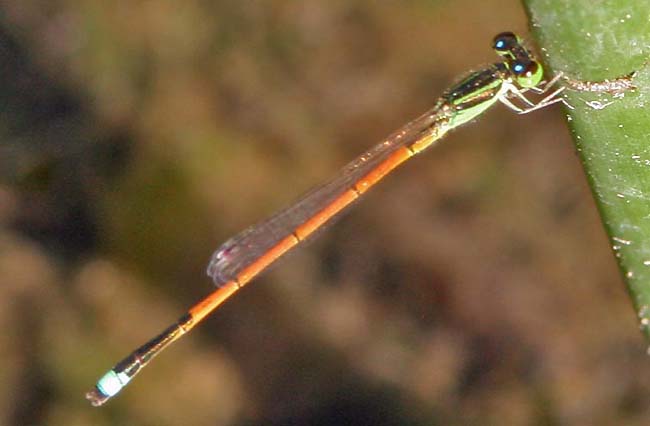 This tiny and colorful damselfly reminded me of several forktail (Ischnura) species in California. I believe it is a male Ischnura aurora,
which appears to be widespread in Australasia and southeast Asia. In
Australia it is apparently called Aurora Bluetail, but in Thailand it
goes by Golden Dartlet. Given that it is an Ischnura, the better name is Aurora Forktail.
This tiny and colorful damselfly reminded me of several forktail (Ischnura) species in California. I believe it is a male Ischnura aurora,
which appears to be widespread in Australasia and southeast Asia. In
Australia it is apparently called Aurora Bluetail, but in Thailand it
goes by Golden Dartlet. Given that it is an Ischnura, the better name is Aurora Forktail. 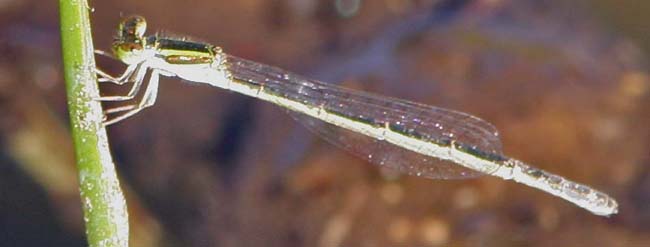
This female damsel, found nearby, seems likely to be a female Ischnura aurora.
| The remaining odonates were perching dragonflies in the family Libellulidae. All of the ones that I photographed appear to be widespread Australian species. |
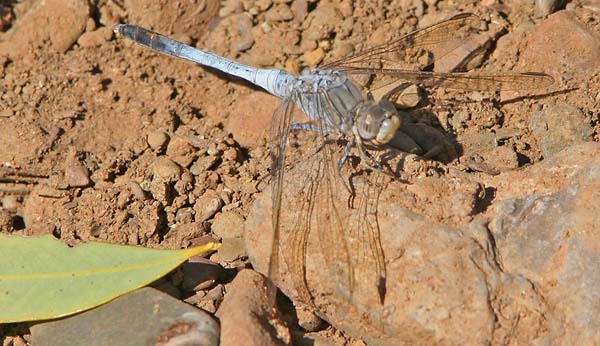
Blue Skimmer Orthetrum caledonicum; it reminded me very much of Western Pondhawk Erythemis collocata in California
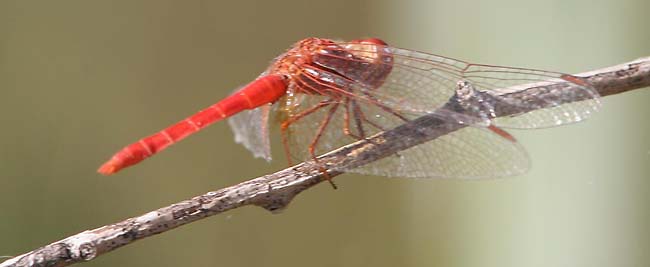
Several odes recalled meadowhawks Sympetrum in California. This bright red one, with unmarked abdomen, red pterostigma, and slight orange wash at base of lower wing, may be Scarlet Percher Diplacodes haematodes.
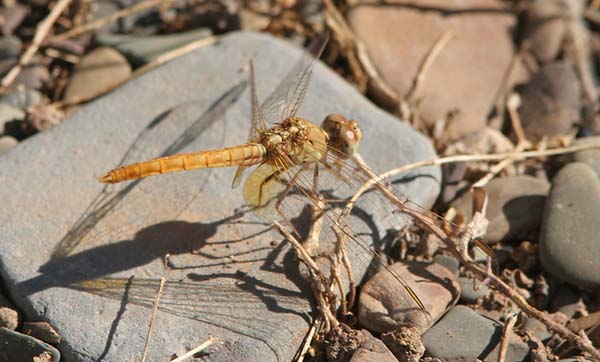
This one also has an unmarked abdomen and touch of orangey wash at base of lower wing. Although it looks female-colored, it appears to show male appendages, and may be an young male Scarlet Percher. If so, then I would expect that both the abdomen and the pterostigmas, currently yellow, will become bright scarlet as it matures.
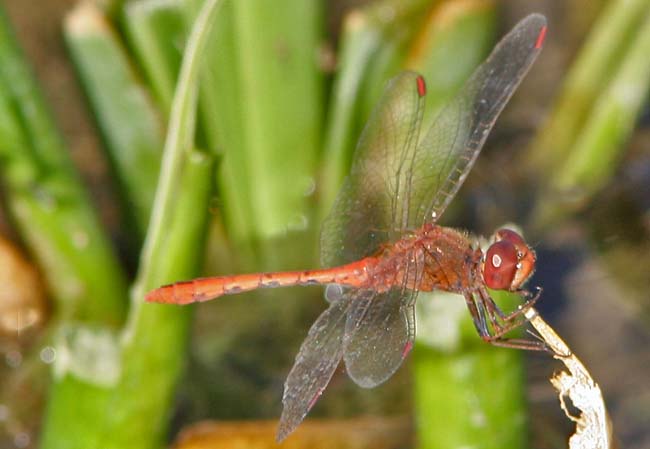 This
red one is rather similar to the above Scarlet Percher, but note the
series of black spots atop the abdomen segments, and also dark dots on
the sides of the abdomen. This may be another widespread species in the
same genus, Wandering Percher Diplacodes bipunctata. It is a male whose wings are getting rather tattered, so presumably it is old and wearing out.
This
red one is rather similar to the above Scarlet Percher, but note the
series of black spots atop the abdomen segments, and also dark dots on
the sides of the abdomen. This may be another widespread species in the
same genus, Wandering Percher Diplacodes bipunctata. It is a male whose wings are getting rather tattered, so presumably it is old and wearing out. 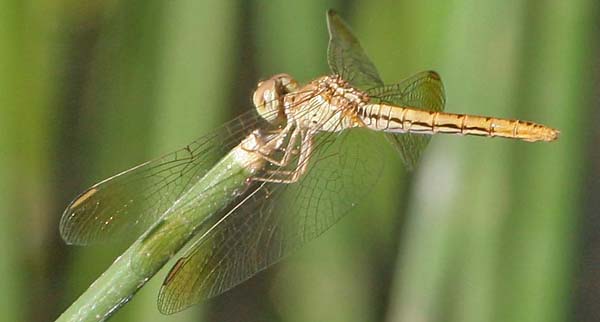
A female Wandering Percher D. bipunctata. This species occurs not only in Australasia, but throughout southeastern Asia, west to the Indian subcontinent and Sri Lanka. Note the yellowish wash on the outer wings on this species, below the yellow pterostigmas.
South Australia MALLEE, FLINDERS & COASTAL HIGHLIGHTS |
|
South Australia BIRDSVILLE TRACK HIGHLIGHTS |
|
page created 29 Nov 2009
|
© Don Roberson 2009 |
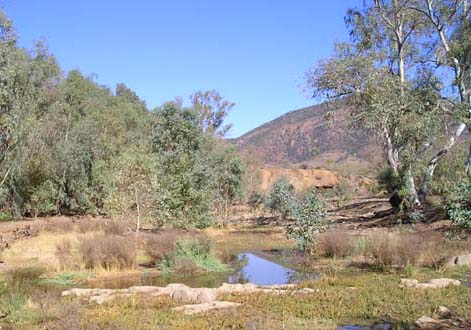 During
our very busy five days driving 2800 km up the Birdsville Track and
back, there was very little time to look for odes. I managed just one
stop: about 20 minutes on 19 Nov at Brachina Creek in Flinders National
Park (right). Even then I was often distracted by birds or wallaroos,
but I photographed the following odonates.
During
our very busy five days driving 2800 km up the Birdsville Track and
back, there was very little time to look for odes. I managed just one
stop: about 20 minutes on 19 Nov at Brachina Creek in Flinders National
Park (right). Even then I was often distracted by birds or wallaroos,
but I photographed the following odonates.